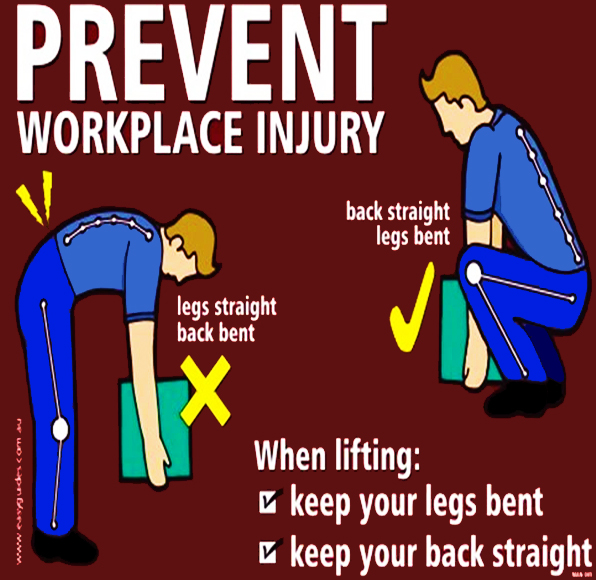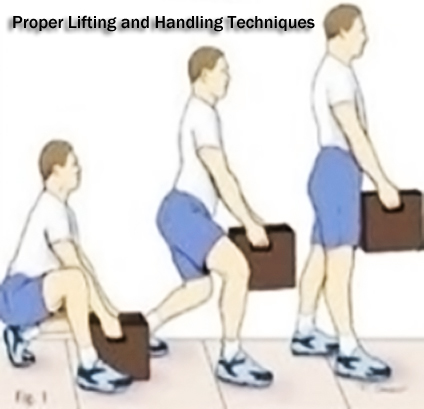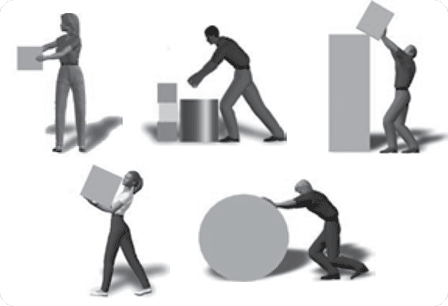Individual Lifting Basics
- Manual lifting and carrying of heavy loads should only be used as a last resort. Use mechanical assistance, such as trolleys, forklifts etc. suited to the load and the task.
- Keep heavy items at working height.
- Try to make the load as light or small as possible. Handle fewer items at one time if necessary.
- If the object is unstable, hot, sharp or slippery, consider ways it can be enclosed or contained to reduce the risk.
- There should be sufficient space for lifting to be done in the right position and with correct body movements. There should be no obstructions when moving things.

-
The start and finish heights of the load should be a suitable level above the floor (if practical).
-
The load should be carried as close to the body as possible.
-
The back should not be twisted.
-
Carrying with one hand should be avoided.
-
If lifting has to be frequently repeated, the acceptable weight of the load rapidly diminishes.
-
Ideally, the width of the load across the body to be no more than 50 cm to allow the elbows to be supported against the trunk of the body.
-
Load height should allow workers to see where they are going.
-
The length of the load should not exceed 30 cm so the centre of gravity stays close to the body.
-
Twisting while bending is particularly harmful.
-
Bend to lift an object – do not stoop. Keep your back straight by tucking in your chin.
-
Lift with the strong leg muscles, not the weaker back muscles.
The following video reviews these guidelines:
Team Lifting Basics
- Ensure there is an adequate number of workers in the team.
-
Only attempt team lifting if trained to do so with one person appointed to plan and take charge of the operation.

-
Ensure enough space is available for the handlers to manoeuvre as a group.
-
Training in team lifting has been provided and the lift rehearsed, including what to do in case of emergency. The following video reviews these guidelines:
Ergonomics
The biggest risk for most workers is ergonomic injury from sprains, strains, and repetitive work.
Protect your back and limbs by practicing safe ergonomic principles when performing your job functions.

Maintain neutral postures and rotate your tasks to give different muscles a rest. Limit the tasks that you do on your knees, over your head or with your back bent. If necessary, alternate arms and use slow, deliberate movements to avoid straining your muscles. Take small breaks every 20-30 minutes to give your muscles a rest.
Adjust your work and work environment to suit your needs.
